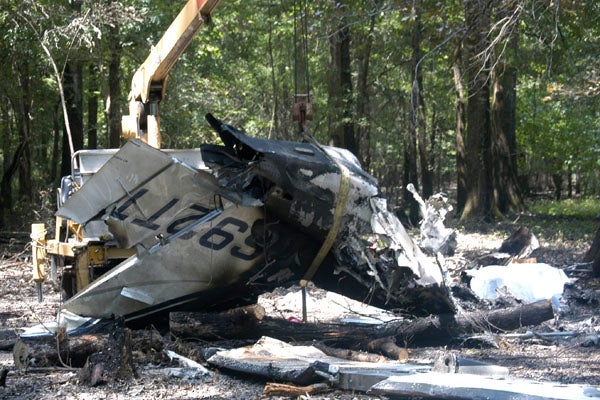Report issued in plane crash
Published 11:44 am Tuesday, August 2, 2011
A preliminary report issued by the National Travel Safety Bureau (NTSB) Monday night indicates engine issues may have been a contributing factor in a July plane crash that killed a Florida family of seven in Demopolis.
According to the NTSB, initial examination of the airframe and the left engine assembly did not reveal any catastrophic in-flight mechanical failures; however, during initial examination of the right engine assembly – after the right engine fuel pump was removed – significant damage was observed on the camshaft gear teeth.
Fred Teutenberg, 42; his wife, Terresa, who was in her mid-30s; their daughter Emma, 2; their son Peyton, 4; their daughter Ellie, 6; their son Brendon, 9; and their son Will, 10 were killed July 9 when their plane crashed less than a mile from the Demopolis Municipal Airport.
An emergency call from Teutenberg prior to the crash indicates the pilot was experiencing problems with his right engine.
According to preliminary information obtained from the Federal Aviation Administration (FAA), Teutenberg was in cruise flight at 21,000 feet and in contact with the Atlanta air route traffic control center en route from St. Louis to Destin, Fla. when he declared an emergency due to a rough running engine. He diverted to Demopolis Municipal Airport, which was located 5 miles from the airplane’s position.
Teutenberg was switched to Meridian Approach while descending through 17,500 feet and subsequently confirmed that he had shut down the right engine and reported the airport in sight. The pilot was cleared for a visual approach and then approved for a frequency change to the local common traffic advisory frequency when the airplane was about 3 miles east of the airport.
According to the NTSB report, there were no further communications received from the airplane. The airplane’s radar track was consistent with an approach to runway 22, a 5,002-foot-long, 100-foot-wide, asphalt runway, when radar contact was lost at 1739, at an altitude of 800 feet.
The NTSB report indicates the airplane impacted trees in a wooded area about .8 miles north of the runway 22 threshold. The airplane came to rest inverted, in a flat attitude, on a course of about 100 degrees. The cockpit, the cabin 40-inches forward of the tail cone and the left wing were consumed by fire. A series of tree strikes were observed about 50 feet above the ground, approximately 70 feet south of the main wreckage.
Investigators reported all major portions of the airplane were accounted for at the accident site. There was no longitudinal deformation of the fuselage noted. The radar dome was observed installed and retained its shape. All three landing gear actuators were observed in the extended position. Portions of the flaps that were not compromised due to fire and or impact damage were extended approximately 40 degrees. The entire right wing was separated at the root and came to rest against a tree adjacent to the main wreckage. The right engine propeller was observed at or near a feathered position. The left engine and propeller were fire damaged.
An initial review of maintenance records revealed that airplane’s most recent annual inspection was performed January 19, 2011.





